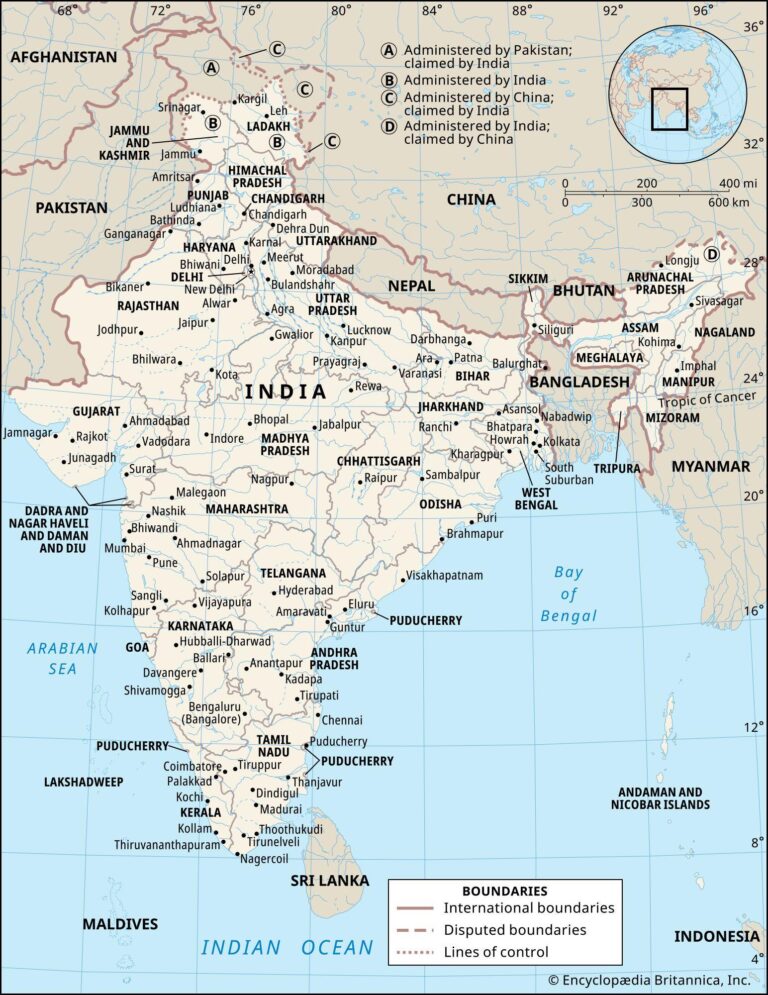In the wake of escalating tensions and unpredictability in U.S. foreign policy under the Trump administration, India is actively pivoting to reinforce its strategic partnerships with Russia and China. Facing what some officials describe as a period of uncertainty and shifting alliances, New Delhi aims to bolster regional stability and safeguard its geopolitical interests by deepening ties with its influential neighbors. This recalibration marks a significant development in India’s diplomatic approach amid a rapidly evolving global landscape.
India Navigates Diplomatic Challenges Amid Strained US Relations
As geopolitical tensions escalate, India finds itself recalibrating its diplomatic strategy amid cooling relations with the United States. The recent trade disputes and fluctuating policy stances under the Trump administration have prompted New Delhi to explore alternative alliances, highlighting a pragmatic shift toward a more diversified foreign policy. This realignment aims not only to secure India’s economic interests but also to bolster its strategic autonomy in a complex international landscape.
Key areas of focus in India’s evolving diplomatic outreach include:
- Enhancing energy cooperation with Russia to ensure long-term fuel security
- Deepening trade and infrastructure partnerships with China despite ongoing border tensions
- Strengthening multilateral engagements within BRICS and Shanghai Cooperation Organisation frameworks
| Country | Main Diplomatic Goal | Recent Developments |
|---|---|---|
| Russia | Energy & Defense Cooperation | Increased oil imports, joint military exercises |
| China | Trade & Infrastructure Projects | New railway corridor discussions, trade balance talks |
| United States | Trade Stability & Strategic Partnership | Ongoing tariff negotiations, defense tech concerns |
Deepening Strategic Partnerships with Russia and China
In response to the shifting dynamics triggered by the previous U.S. administration, India has taken decisive steps to fortify its relationships with Russia and China, two key global players in Asia. This recalibration reflects New Delhi’s strategic intent to diversify its diplomatic and economic engagements, ensuring resilience against uncertainties in Western alliances. The deepening collaboration manifests across multiple dimensions including defense cooperation, energy partnerships, and infrastructure development. Notably, India is leveraging historical ties with Moscow, while simultaneously engaging in nuanced diplomacy with Beijing, balancing complex regional ambitions.
Key areas of focus include:
- Defense and technology transfers: Upgrading military hardware and joint research on advanced technologies.
- Energy security: Expanding oil and gas imports and exploring nuclear energy collaborations.
- Trade and infrastructure: Increasing bilateral trade volumes and participating in regional connectivity projects.
| Country | Recent Agreements | Strategic Importance |
|---|---|---|
| Russia | Joint defense exercises; S-400 missile system deal | Longstanding military ally and energy supplier |
| China | Border confidence-building talks; Trade growth initiatives | Key regional trading partner with geopolitical complexities |
Recommendations for India to Balance Geopolitical Interests and Economic Goals
To navigate its complex geopolitical environment while safeguarding economic imperatives, India must adopt a multi-layered strategy that fosters flexible diplomacy without alienating any key partner. The country’s engagement with Russia and China should be pursued through pragmatic collaboration in sectors like energy, defense, and technology, ensuring mutual benefits without compromising sovereignty. Additionally, India could bolster its role within regional forums such as BRICS and the Shanghai Cooperation Organisation to assert influence and build trust, rather than confrontational posturing that risks isolation.
Key policy measures to consider include:
- Diversifying trade partnerships: Reducing over-dependence on any single nation by expanding ties with Southeast Asia, Africa, and Europe.
- Enhancing strategic autonomy: Investing in indigenous technologies and defense capabilities to maintain leverage in international negotiations.
- Deepening economic corridors: Supporting infrastructure projects that link India with neighboring economies to create integrated supply chains.
- Promoting multilateralism: Advocating for rule-based order to safeguard open markets and peaceful dispute resolution.
| Strategic Focus | Key Actions | Expected Outcomes |
|---|---|---|
| Energy Security | Joint ventures with Russia, diversify LNG sources | Stable energy supply with competitive pricing |
| Defense Cooperation | Co-development of platforms, military exercises | Enhanced deterrence and operational readiness |
| Trade Expansion | New free trade agreements, digital economy initiatives | Increased exports and foreign investment |
| Technology Partnerships | Research collaborations, 5G and AI development | Innovation ecosystem growth, reduced dependence |
In Retrospect
As India navigates an increasingly unpredictable geopolitical landscape shaped by shifting US policies under the Trump administration, its pivot towards Russia and China marks a significant recalibration of its foreign strategy. While New Delhi aims to balance its long-standing partnerships with Western powers, the pursuit of deeper ties with these regional giants underscores a pragmatic approach to safeguarding its economic and security interests. The evolving dynamics between these major players will remain a key factor in shaping the future of Asia’s geopolitical order.




